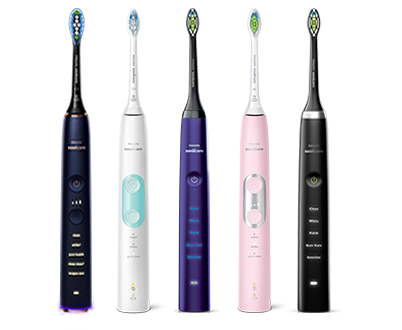It’s increasingly understood that dental hygiene is not only key to our oral health but our health overall.1 So when we’re caring for our children’s teeth, we’re also caring for their general health. We’re going to share some great children’s dental care tips and tricks, so we can give your little one’s the best possible start to life. In this article, we will explore oral hygiene tips for kids including: Read on for your guide to oral health for kids.
To help care for your children’s teeth, follow these brushing technique steps and oral hygiene tips for kids:
Your child’s diet is not only key for their overall health, but it’s also an important part of children’s dental care. Here are some top tips when considering diet against children’s dental care:
There are several key reasons regular dental check-ups are an important part of your children’s dental care including:4
Whether you want answers to questions like, “When do kids lose their first tooth?” or advice on how to teach the correct brushing technique for your children we’ve got you covered. This guide will help you learn everything you need to know about oral health for kids so you can start them off right! Disclaimer: Sources 1 The Connection Between Oral Health and Overall Health and Well-Being, NCBI
Your baby will start teething between 3 months and 1 year of age. Most babies’ first tooth will erupt between 6 and 10 months of age.12
Even before your baby gets their first tooth, you can practice good dental hygiene by wiping their gums with a damp cloth. As soon as their teeth erupt, start brushing your baby’s teeth for them, following these oral hygiene tips for kids and babies:
• Use a soft-bristled brush or a soft, damp cloth that won’t damage your baby’s gums.
• Use clean, plain water.
• You do not need to introduce toothpaste immediately, but if you do, use no more than a grain of rice.13
• Brush your baby’s teeth twice a day, in the morning and before bed.
If the child’s dexterity allows, your children will develop the fine motor skills to brush their teeth independently by 8 years of age. However, it is still important to supervise kids brushing their teeth until they are around 10 years old, as children tend to concentrate on the biting surfaces, missing the lingual, and may forget to spit out excess toothpaste.14
Top tip: When brushing your children’s teeth, invest in a quality toothbrush to help like the One for Kids by Philips Sonicare. With a 2-minute SmarTimer and soft bristles, this toothbrush is a great way to ensure your child learns to brush safely and properly.
You should brush children’s teeth for at least 2 minutes.15
So, when do kids lose their first tooth? Although this can vary from child to child, here are a few facts to help answer, “What age do kids start losing teeth?”:16
• On average, baby teeth begin to shed around age 6.
• Commonly, the lower middle teeth, called incisors are the first to be lost.
• The baby molars are typically shed when your child is between 10-12 years of age.
* vs. using a manual toothbrush alone
2 Nutrition and oral health, ADA
3 The Best and Worst Foods for Your Teeth, University of Rochester Medical Centre
4 NSW fact sheet on early childhood dental visits, ADA
5 Evaluation of calcium and magnesium contents in tooth enamel without any pathological changes: in vitro preliminary study, NCBI
6 Building Strong Bones: Why Calcium Counts, AAP
7 Role of Dietary Fibre in Managing Periodontal Diseases—A Systematic Review and Meta-Analysis of Human Intervention Studies, NCBI
8 Fiber: An Important Part of Your Teen's Diet , HealthyChildren.org, AAP
9 Nutrition and Oral Health, ADA
10 Relationship between Food Habits and Tooth Erosion Occurrence in Malaysian University Students, NCBI
11 Tiny Smiles, ADA
12 Teething, AAP
13 Fluoride and children, HealthyChildren.org
14 Good Oral Health Starts Early, HealthyChildren.org
15 FAQs, AAP
16 When Children Begin to Lose their Baby Teeth, HealthyChildren.org
17 Nassar Y, Brizuela M. The Role of Fluoride on Caries Prevention. [Updated 2023 Mar 19]. In: StatPearls [Internet]. Treasure Island (FL): StatPearls Publishing; 2024 Jan-.
For Kids
Sonic electric toothbrush
HX6321/02
For Kids Age 3+
2-pack brush heads
HX6032/94

You are now exiting the Philips United States (US) site and entering the Philips global site. This content is intended for a global audience. It may not apply to the US and should not be interpreted as meeting US standards, executive orders or regulations.
Continue